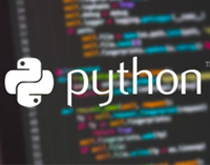‘and’ and ‘or’ are not guaranteed to return a boolean
When you use or, it will either return the first value in the expression if it’s true, else it will blindly return the second value. I.e. or is equivalent to:
def or_(a, b):
if a:
return a
else:
return bFor and, it will return its first value if it’s false, else it returns the last value:
def and_(a, b):
if not a:
return a
else:
return bA simple example
In Python you can compare a single element using two binary operators–one on either side:
if 3.14 < x < 3.142:
print("x is near pi")In many (most?) programming languages, this would be evaluated in a way contrary to regular math: (3.14 < x) < 3.142, but in Python it is treated like 3.14 < x and x < 3.142, just like most non-programmers would expect.
Short-circuit evaluation
Python minimally evaluates Boolean expressions.
>>> def true_func():
... print("true_func()")
... return True
...
>>> def false_func():
... print("false_func()")
... return False
...
>>> true_func() or false_func()
true_func()
True
>>> false_func() or true_func()
false_func()
true_func()
True
>>> true_func() and false_func()
true_func()
false_func()
False
>>> false_func() and false_func()
false_func()
Falseand
Evaluates to the second argument if and only if both of the arguments are truthy. Otherwise evaluates to the first falsey argument.
x = True
y = True
z = x and y # z = True
x = True
y = False
z = x and y # z = False
x = False
y = True
z = x and y # z = False
x = False
y = False
z = x and y # z = False
x = 1
y = 1
z = x and y # z = y, so z = 1, see `and` and `or` are not guaranteed to be a boolean
x = 0
y = 1
z = x and y # z = x, so z = 0 (see above)
x = 1
y = 0
z = x and y # z = y, so z = 0 (see above)
x = 0
y = 0
z = x and y # z = x, so z = 0 (see above)The 1’s in the above example can be changed to any truthy value, and the 0’s can be changed to any falsey value.
or
Evaluates to the first truthy argument if either one of the arguments is truthy. If both arguments are falsey,
evaluates to the second argument.
x = True
y = True
z = x or y # z = True
x = True
y = False
z = x or y # z = True
x = False
y = True
z = x or y # z = True
x = False
y = False
z = x or y # z = False
x = 1
y = 1
z = x or y # z = x, so z = 1, see `and` and `or` are not guaranteed to be a boolean
x = 1
y = 0
z = x or y # z = x, so z = 1 (see above)
x = 0
y = 1
z = x or y # z = y, so z = 1 (see above)
x = 0
y = 0
z = x or y # z = y, so z = 0 (see above)The 1’s in the above example can be changed to any truthy value, and the 0’s can be changed to any falsey value.
not
It returns the opposite of the following statement:
x = True
y = not x # y = False
x = False
y = not x # y = True Sistemciler Sİstem Uzmanları
Sistemciler Sİstem Uzmanları

